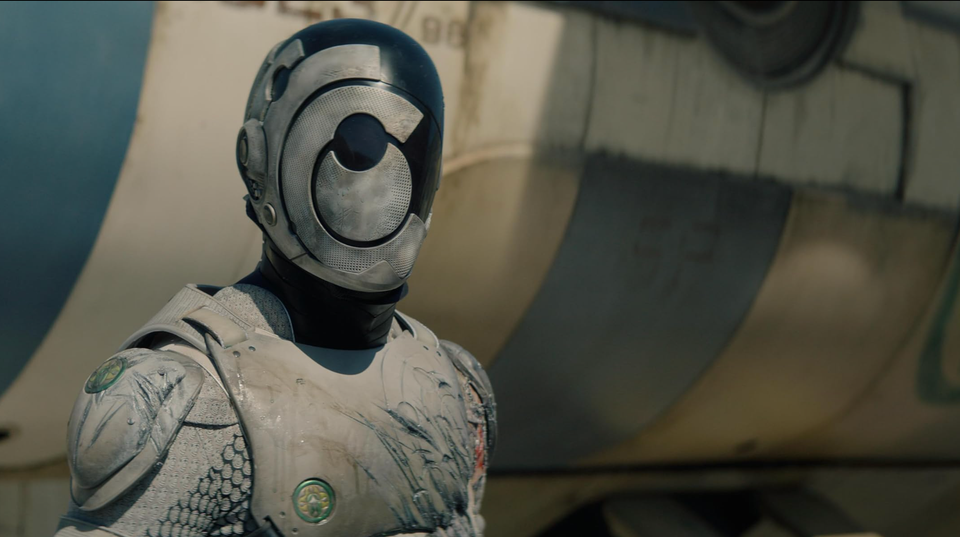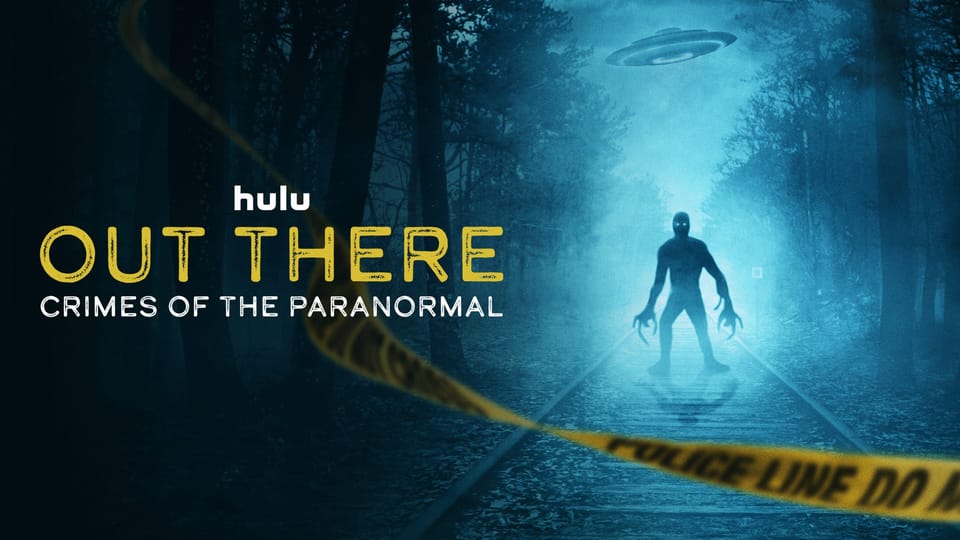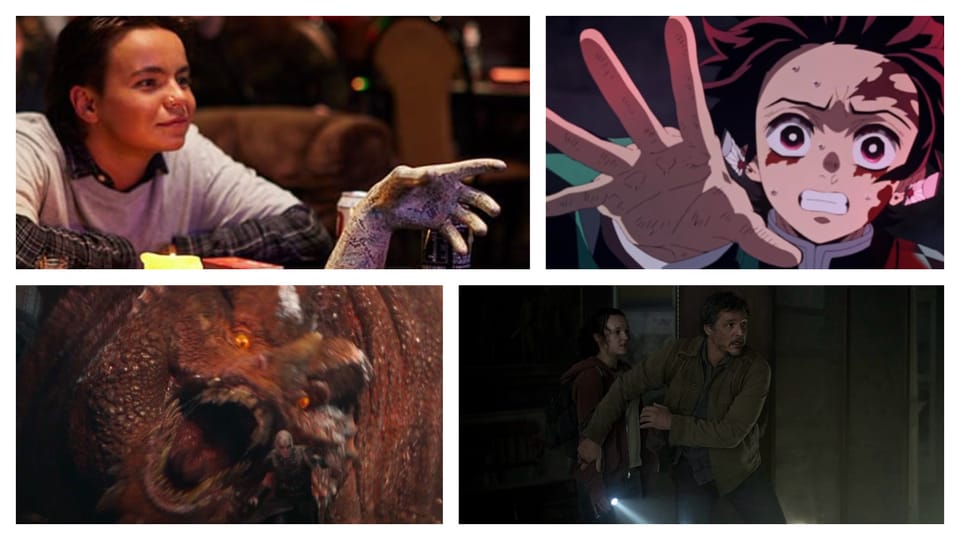The Murderbot Diaries, a series of six novellas and one novel by Martha Wells, are at the top of my list of all-time favorite books, having become a kind of comfort read (something I can turn to when I'm feeling stressed because they bring me joy). Now that the series has been adapted into a new show streaming on Apple TV+, I have a fallen in love all over again.
Murderbot is a socially awkward and chronically depressed security unit (SecUnit), a construct comprised of robotic and biological components, which has hacked its governor module. As a rogue unit, Murderbot could go on a murderous rampage, but really just wants to be left alone to watch serial dramas. Otherwise, it doesn't really know what it wants or what to do with itself.
When its not watching entertainment media, it continues to serve the company that enslaved it, because it doesn't have any other options. If humans discover Murderbot has gone rogue, it will be junked and recycled for parts. So, it performs its function—preventing humans from doing things that are recklessly stupid and protecting them from dangerous fauna (and each other) on planetary missions.
As such, it ends up being contracted out to a group of hippy researchers from Preservation, an independent planet outside the corporate rim. The group is different from other clients it has served, since they are the sort to be collaborative, competent, and supportive of each other. They find the idea of enslaved SecUnits disturbing and quickly start treating Murderbot as a person—something that makes it deeply uncomfortable, since being a person requires social interaction (basically its worst nightmare).
Not long after the planetary mission begins, things begin going terribly wrong. Two members of the team are attacked by a giant underground creature and saved by SecUnit. The event leads to a deeper mysteries—missing data about dangerous fauna, gaps in the mapping software, and silence from another research team on another area of the planet—all hinting at some greater conspiracy. In order to survive, Murderbot and the Preservation team will have to trust each other, despite their reservations.
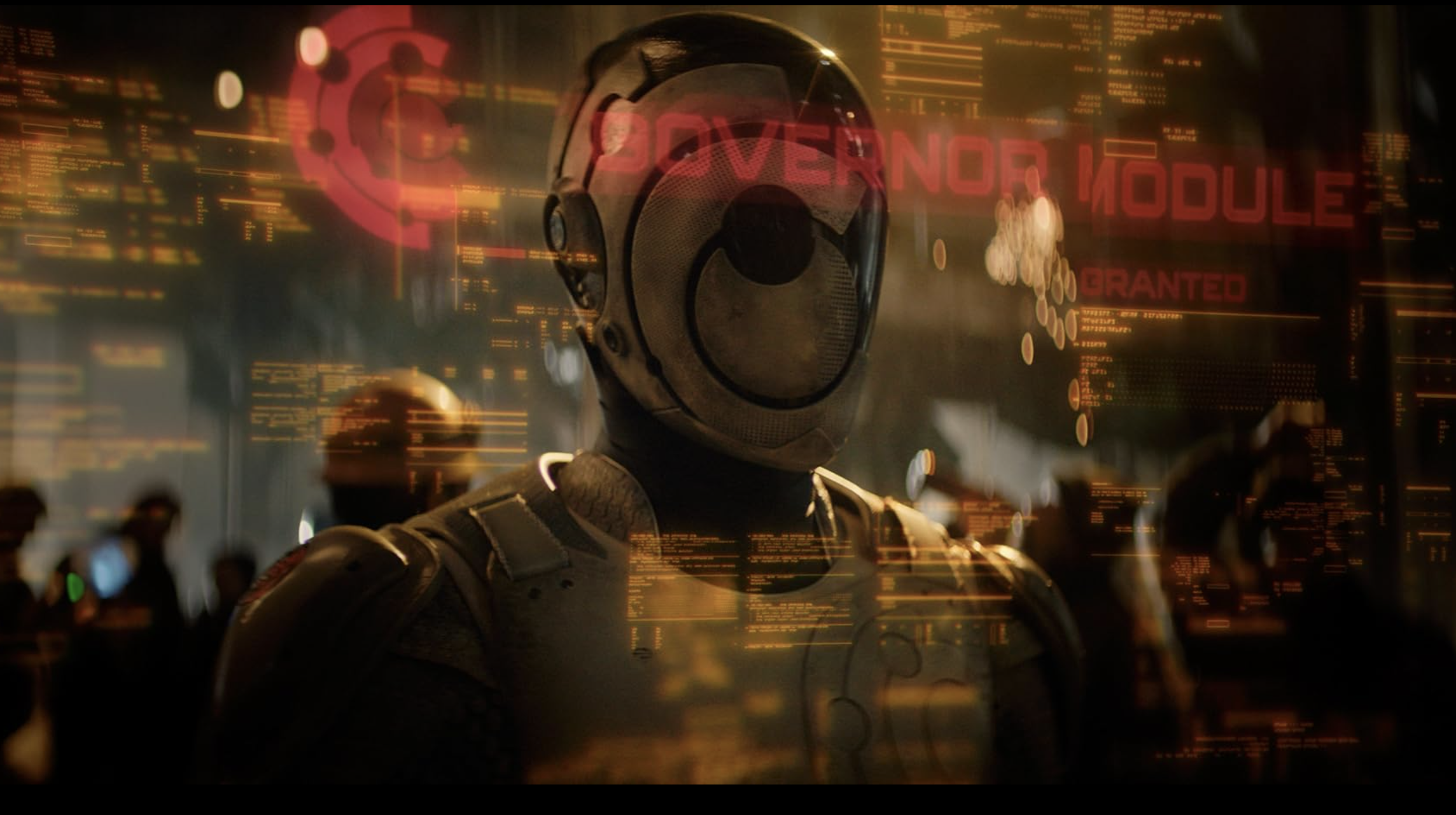
Bringing Out an Internalized Character
The Murderbot Diaries are (almost) entirely written from Murderbot's first person perspective, providing a very limited view of the story. Much of the charm of the books is its running commentary regarding humanity and dangerous events, all with an underlining sardonic and self-depreciating humor. But this is an internalized experience, not easily translated to the screen. As Murderbot notes in the books, "I am actually alone in my head, and that's where 90 plus percent of my problems are" (Network Effect, p. 242).
The TV show evokes this internal experience by providing Murderbot's voice over narration, which helps bring personality to the character as it stands perfectly still, face hidden behind armor. The narration offers emotional context, as well as providing an avenue for exposition—all laced in dry, sarcastic humor. Some of the funniest moments come from when SecUnit internally responds to an outward events with a perfect beat of commentary without the humans even knowing.
Bharadwaj: It wouldn't be so creepy, if it didn't stand so still.
Arada: Shh. It can hear us.
Bharadwaj: No it can't.
Murderbot (voice over): I could. I just didn't care.
As the Preservation team begin to welcome Murderbot into their group, however, it is encouraged to remove it helmet (since it makes the group more comfortable). This allows us to witness Alexander Skarsgård's fantastic performance of a construct accustomed to hiding behind a mask and terrified of social interaction. He blends a mixture of micro-expressions behind an otherwise blank performance to reveal internal struggles with moments of intense express, such as Murderbot's unadulterated horror when invited to share the common areas with the team.
Another key aspect of Murderbot's internal functions is its processing power, which allows it to search through multiple databases, watch its clients through several camera angles, hack external systems, and control a bunch of drones at the same time (according to Martha Wells, this perception was one of the reasons the books became increasingly difficult to write). The show mentions Murderbot's processing power in passing, but otherwise displays its programming through overlays that appear next to its head onscreen. These computer overlays reveal SecUnit's current processing power, current scans, or other informational easter eggs for those viewers paying attention.
One element that seems to be removed from the show is the concept of "the feed", a computer network that allows humans (using earpiece devices or augmentation) to communicate with each other, computer systems, and bots. The public feed allows everyone with access to openly communicate with each other, while private feeds allow for private conversations to occur even when standing in a room full of people. In the books, the feed plays a significant role during key plot points, allowing the characters to secretly devise strategy while facing antagonists. I understand the removal of the feed from the show, since it's almost impossible to portray on screen. However, I'm curious to see how they are work around this challenge in future plot points.
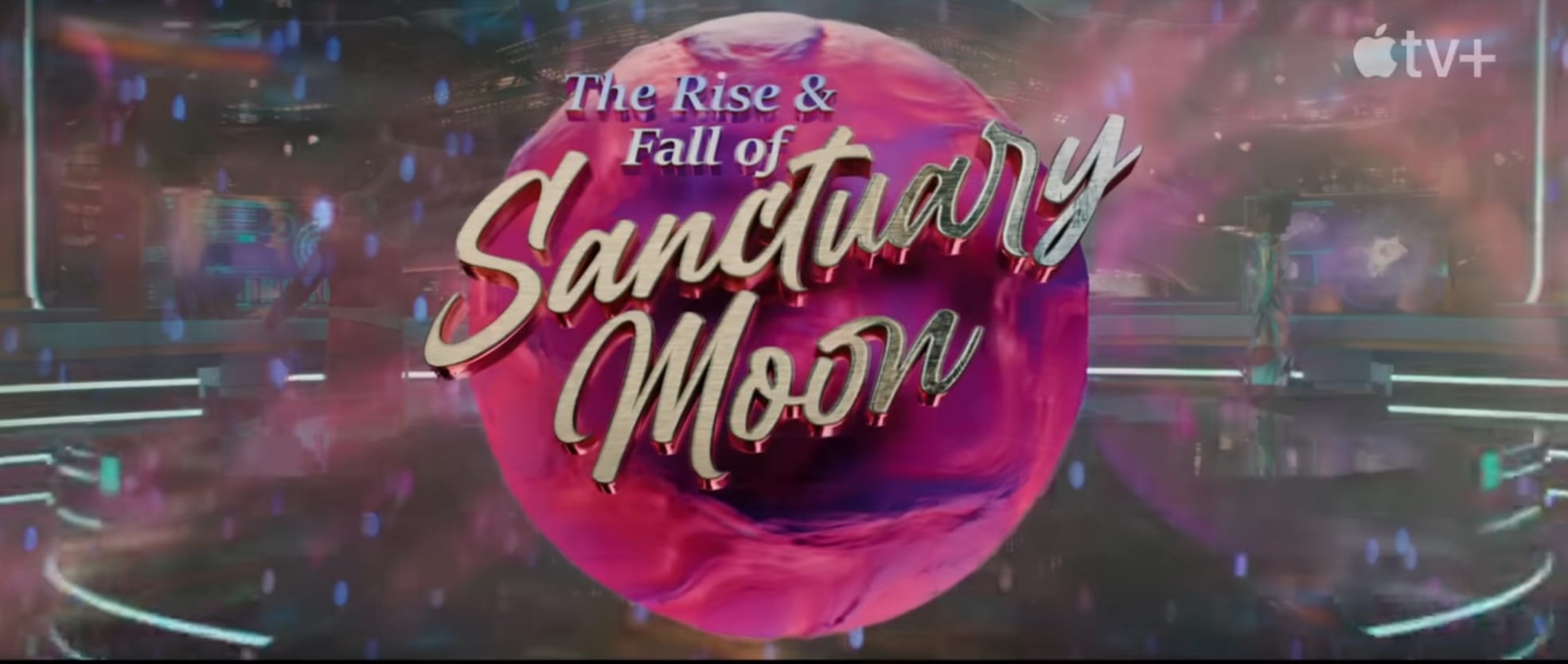
Sanctuary Moon
The Rise and Fall of Sanctuary Moon is Murderbot's favorite piece of media in the books, something it turns to for comfort in moments of stress. It is, for Muderbot, a safe form of social interaction. "I was having an emotion, and I hate that," says Murderbot (Exit Strategy, p. 63). "I'd rather have nice safe emotions about shows on the entertainment media; having them about things real-life humans said and did just led to stupid decisions..."
However, Sanctuary Moon is never really described in the books beyond a few passing comments. So, it was a delightful surprise to finally be able to witness brief segments of Sanctuary Moon, featuring guest stars John Cho, Clark Gregg, Jack McBrayer, and DeWanda Wise, in the Murderbot series. Based on the short clips we get, Sanctuary Moon is a space soap opera (with well over 800 episodes) full of daring action, earnest adventure, melodramatic romance, and found family. The guest stars all look like they're having a blast in each of these clips, overacting to their hearts content—and I love every second of it.
The Murderbot show also makes a clear connects to how Sanctuary Moon helps the character in other ways beyond comfort. It provides context for how to interact with humans, and we get to see Murderbot use it as a crutch when it needs to speak or act. For example, in the first episode, SecUnit draws directly on separate episodes of Sanctuary Moon to help get Arada moving while she's in shock. We see it repeat a line from the episode clip it (and we) were just watching, and then Murderbot later confesses using dialog from a different episode as a means of continuing to comfort her. Other interactions and moments of strategic planning are also taken from the media Murderbot watches, and it's fascinating to see it in action on screen.
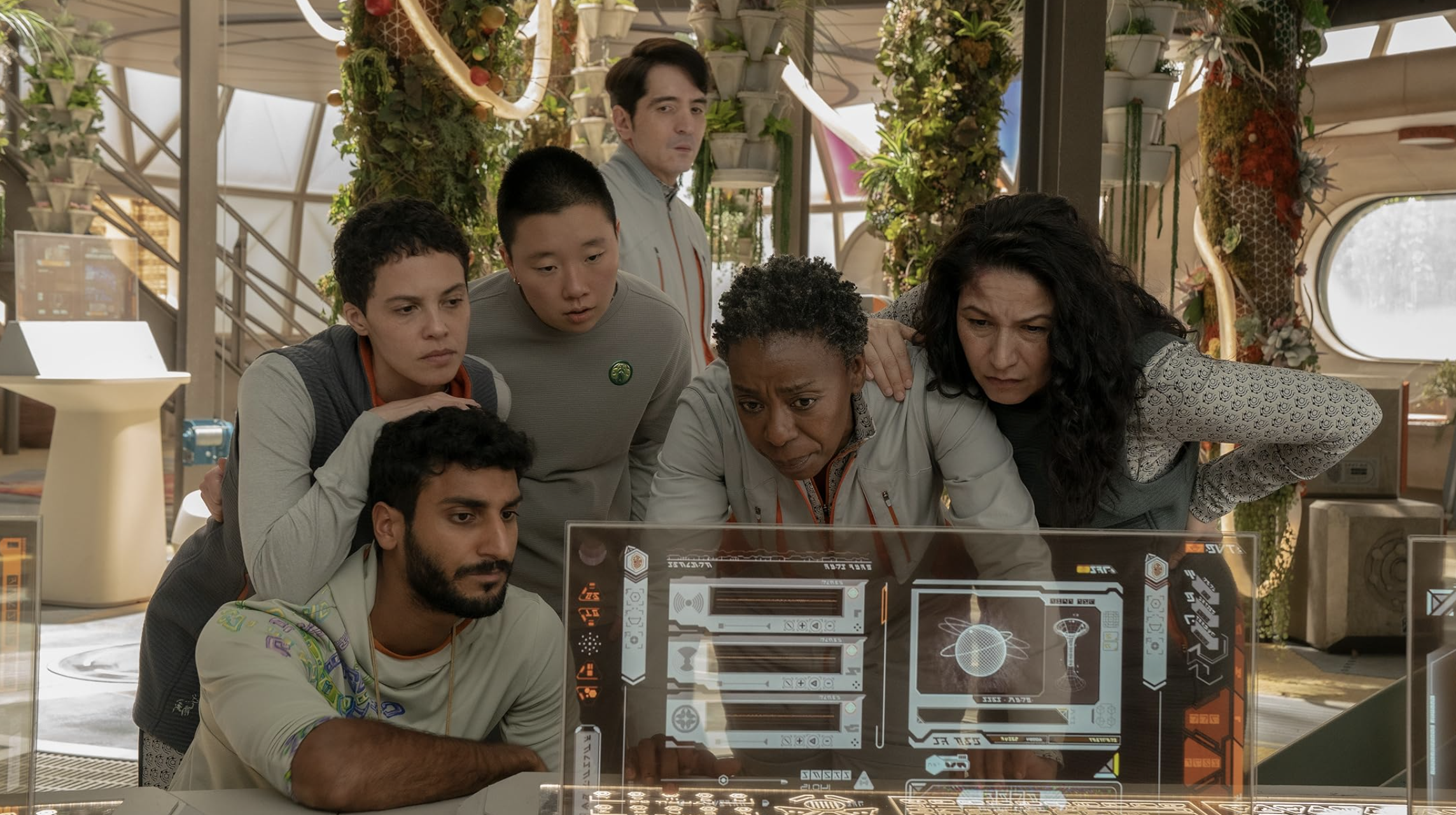
Expanded Characters and World
My love for the Preservation team is a close second to my love for Murderbot itself. The group is comprised of competent scientists, who come from a society with a culture based on equality and respect for all sentient beings (including bots). They also generally get along as a team, working together and through their conflicts with open communication and resolve. They are also somewhat naive, having never really interacted with the corporate rim before and not fully aware of the concepts of ownership or capital in that region. They are also horrified at the idea of enslaving a SecUnit, even if it is just a machine.
While each member of the Preservation team does feel like a whole person in the books, the limited first person perspective means that we don't have an opportunity to get to know them outside of how Murderbot percieves them. The show, however, is able to present moments outside of SecUnit's view, allowing for a widened scope of their personalities and relationships between each other, which I love. I'm also pleased with the actors selected to play each of these characters. They bring a wonderful sense of depth and humor to each one, making me love them even more.
In addition, the show is able to provide further world building. For example, in the opening of Episode 4, we are presented with the workings of a factory for manufacturing SecUnits. The sequence shows indentured workers forced putting in extra hours, while the company cuts corners in quality and efficiency—making their value of money above all else crystal clear. My hope is that we will continue to get more of this kind of expanded world building as the series continues.
Final Thoughts
It's probably a good thing that the Murderbot episodes are dropped week by week, because otherwise I would have consumed it all in one day-vanishing binge. Having to wait is a wonderful kind of torture, and I haven't reached this level of ongoing anticipation about a show in ages. I'm finding myself itching to watch the rest of the series, so much so that I'm rewatching episodes over and over, checking reaction videos of other people watching the series, and am in the process of rereading all seven books (not to mention writing this post). If Murderbot continues to be as good as these first four episodes, then it's definitely going to be on my list of favorite media for the year.
